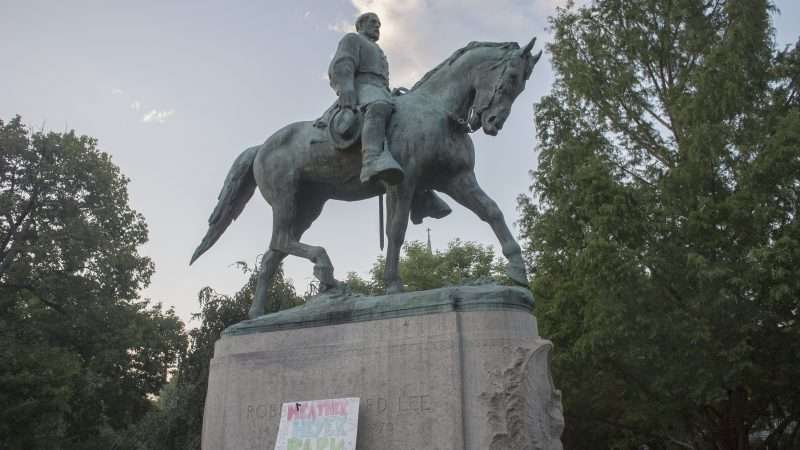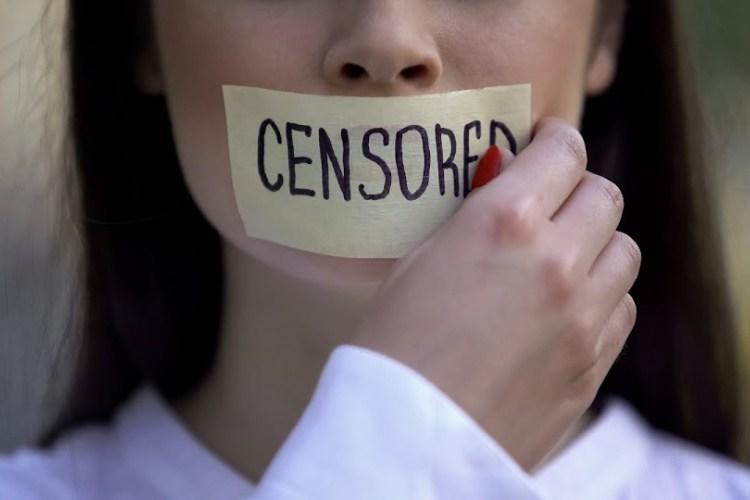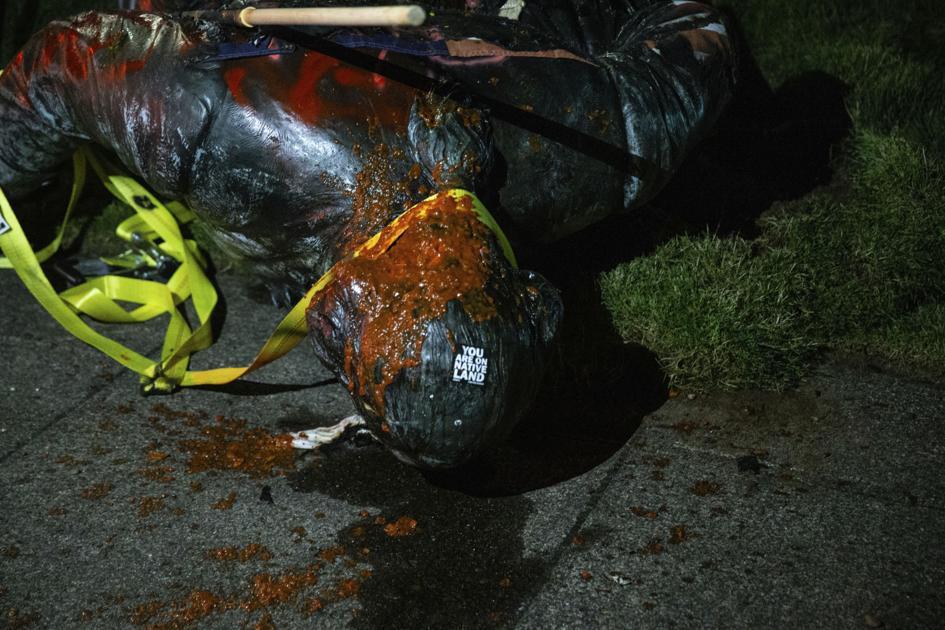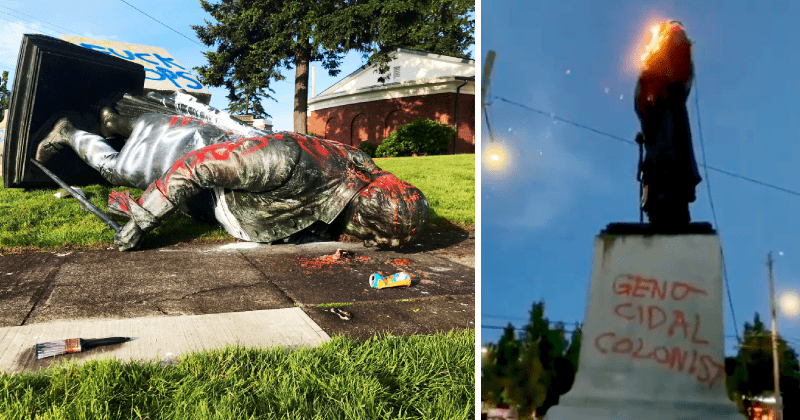I have reviewed the briefs in Regents. My goal, with the benefit of hindsight, was to trace the origin of Chief Justice Robert’s anti-saving construction. The short answer is that the D.C. Respondents’ brief hinted at this resolution, and the Solicitor General’s brief offered a response. But the precise analysis that carried the day was a John Roberts blue plate special. It was cooked up in his chambers, and no one–as far as I can tell–saw it coming.
The starting point of this analysis was the Fifth Circuit DAPA litigation. (Again, I’ll presume familiarity with Texas v. U.S.). The U.S. District Court for the Southern District of Texas found that DAPA was a substantive policy, and had to go through notice-and-comment. The District Court issued a “nationwide injunction,” though in effect the remedy was to vacate the policy in its entirety. The Fifth Circuit affirmed, and found that DAPA was both procedurally and substantively defective. Again, the remedy was to vacate the policy in its entirety. Neither court considered vacating only the illegal portions of the policy that conferred benefits, but leaving the legal portions (forbearance of removal) in place. I frankly had never considered that was even a possibility.
Next, let’s consider the DACA rescission litigation. The Second, Ninth, and D.C. Circuits, as well as numerous district courts, all reached the same conclusion: Secretary Dukes’s judgment was arbitrary and capricious because DACA was lawful. These courts, to varying degrees, expressly disagreed with the Fifth Circuit. None of thee courts considered whether Dukes erred by failing to separate–or consider separating–the forbearance portion of DACA from the benefits portion. Had Chief Justice Roberts simply affirmed these rulings, I would have disagreed, but my response would be far more restrained.
Now, let’s consider the briefing before the Supreme Court. The litigants that came closest to the Chief’s position were the D.C. Respondents. (If I am missing any other brief, please flag it). This brief was filed by Jenner & Block, and was signed by Ian Gershengorn. Ian previously served with Don Verrilli at the SG’s office. He knows this litigation well. In 2016, Gershengorn’s name was on the Obama administration’s DAPA brief.
First, the D.C. Respondents acknowledged that DACA could be read to have two separate elements: forbearance (“deferred action”) and benefits (“further consequences”).
Although the contours of the Government’s position are far from clear, it seems the Government concluded that the DACA Memorandum was unlawful because it not only resulted in a large number of decisions to defer action, but also triggered the further consequences that presently attend all decisions to defer action. See supra at 36.
That is, the benefits. If DHS viewed the policy in that fashion, there was no need to declare the forbearance portion also illegal.
But even assuming (for the sake of argument) that some conjunction of these policies was indeed unlawful, that in no way explains the judgment that the DACA Memorandum itself was unlawful, or that the policy of allowing childhood-arrivals to apply for enforcement forbearance therefore had to be rescinded.
In other words, people should be allowed to apply for forbearance, even if they would not receive the subsequent benefits. And the respondents are correct that Texas did not dispute the deferred action analysis.
But, as noted above, neither the Fifth Circuit nor the States that challenged the DAPA Memorandum have raised any objection to the large-scale provision of deferred action in that sense. See supra at 9-11. In other words, the legality of the sole action described within the four corners of the DACA Memorandum is essentially undisputed.
And the brief suggests that the provision of benefits need not flow from DACA itself. And those regulations can be modified independently of rescinding the DACA memorandum. (The Chief would expressly adopt this analysis).
Furthermore, the Government agrees that a decision to defer enforcement action by itself need not inherently result in any affirmative benefits. Instead, any benefits flowing from a decision to defer action are the result of separate regulations that post-date the practice of deferred action, pre-date DACA, and can be modified wholly independent of both.
The D.C. Respondents contend that the failure to consider the linkage between forbearance and benefits violated State Farm.
At the very least, their failure to consider whether their objection was actually properly aimed at the DACA Memorandum’s guidance for the exercise of enforcement forbearance—or instead at certain other policies they acknowledge to be separate—means that they “entirely failed to consider an important aspect of the problem.” State Farm, 463 U.S. at 43.
The D.C. Respondents anticipated the most obvious response: the Fifth Circuit enjoined the entire DAPA memorandum.
To be sure, there is a natural explanation for the Government’s failure to consider that its legal objection was not properly directed at the DACA Memorandum: The Fifth Circuit had enjoined the DAPA Memorandum.
Given the disposition of the DAPA case, why should DHS have considered withdrawing only part of the DACA memorandum?
But if that explains the Attorney General’s or DHS’s oversight, it only underscores the shallowness of their analysis. As explained above, the DAPA case was litigated on the premise that the underlying deferred action policy and its collateral effects (which allegedly included an unbounded grant of “lawful presence”) rose or fell together—a premise seemingly invited by the DAPA Memorandum itself. See supra at 8-11. There was no reason for the Government to take the same stance in its internal assessment of DACA. And still worse, the agency documents give no hint that the Government even realized the choice it was making.
The Solicitor General’s reply brief addressed this point at p.21. The SG argues that the deferred action portion cannot be separated from the benefits portion.
DHS was not required to consider whether DACA’s illegality could be addressed by separating deferred action—generally or under DACA specifically—from at least some of the benefits it triggers. D.C. Br. 39-44. Deferred action coupled with the associated benefits are the two legs upon which the DACA policy stands, as many of the briefs in support of respondents confirm. See, e.g., Inst. of Higher Educ. Amicus Br. 5-11. Indeed, it is largely the eligibility for benefits triggered by deferred action that allows DACA recipients to “come out of the shadows and become productive members of their communities.” N.Y. Br. 2. It was not arbitrary and capricious for DHS to view deferred action and its collateral benefits as importantly linked.
The SG was aware of this argument. And he no doubt recognized that this is the sort of argument the Chief can latch onto.
During oral argument, Roberts raised this issue in a colloquy with Ted Olson, who represented the Regents. Earlier, Olson told Justice Alito that DACA memorandum itself did not confer benefits. Rather, the benefits “were triggered by the decision of enforcement policy in DACA.” Then Roberts interjected:
Chief Justice Roberts: But, Mr. Olson, the whole thing was about work authorization and these other benefits. Both administrations have said they’re not going to deport people. So the deferred prosecution or deferred deportation, that’s not what the focus of the policy was. Yes, the other statutes provided that, but it was triggered by—by the memo. So I don’t understand sort of putting what the policy really was about, which is the work authorization and the other things, off to one side is very helpful.
Here, Roberts seems to be suggesting you can’t untangle the benefits and the work authorization as the SG suggested. As the SG suggested, the forbearance and benefits portion are “importantly linked.” Earlier in the argument, Roberts seemed to suggest that the benefits may have been illegal:
Chief Justice Roberts: ..if DACA was illegal, that means that when the government was giving out these benefits it was acting illegally, right? … Now it’s not always the case when the government acts illegally in a way that affects other people that we go back and untangle all of the consequences of that. Did Secretary Nielsen, when she was considering the reliance interests, was she looking simply to the question of a wind-down, or was she looking more generally, for example, to the application of something like the de facto officer doctrine —
I did not see any hints at argument that Roberts was considering applying a “severability” analysis to the Secretary’s decision. Indeed, to the contrary, he suggested that the fact that the benefits were illegal rendered DACA illegal, and thus rescission was proper.
Now, let’s consider Roberts’s decision. (I summarized it at some length here, points 4 through 6). Robert concluded that the Secretary had to do more than “draw a[] rational connection,” as the D.C. Respondents suggested. Roberts wrote that the Secretary should only have withdrawn the benefits portion of the analysis, and not the forbearance portion.
Even if it is illegal for DHS to extend work authorization and other benefits to DACA recipients, that conclusion supported only “disallow[ing]” benefits. It did “not cast doubt” on the legality of forbearance or upon DHS’s original reasons for extending forbearance to childhood arrivals. Thus, given DHS’s earlier judgment that forbearance is “especially justified” for “productive young people” who were brought here as children and “know only this country as home,” the DACA Memorandum could not be rescinded in full “without any consideration whatsoever” of a forbearance-only policy, State Farm.
The D.C. Respondents hinted at this argument, but they did not embrace it. The D.C. Respondents argued that the failure to consider that linkage, altogether, rendered the rescission irrational. But under Roberts’s anti-saving construction, DHS can now simply rescind the benefits portion, but leave the forbearance analysis in place.
Regents represents Monday-Morning quarterbacking at its worst. This form of State Farm review resembles the mirror image of the rational basis test. Under this deferential standard of review, a plaintiff must negative every conceivable justification for a state law. And even if the plaintiff manages to negative all of the government’s defenses, the courts are able to make up additional justifications after the fact. That is, the court can introduce post-hoc arguments that no one considered when the law was enacted.
Usually, the rational basis test is a standard that makes it easier for the government to act. That is, the courts uphold laws under the rational basis test. Here, Roberts’s State Farm framework inverts the traditional rational basis review. The government needs to consider every considerable justification to rescind an old policy. And even then, the Court can make up additional justifications that the government should have considered–including justifications no one had previously considered. With the Chief’s approach, goal posts can alway be moved when appropriate.
For a generation, John Roberts was the Supreme Court’s greatest advocate. He still is. Though he now sits behind the bench, Roberts still employs his superlative lawyering skills. On a consistent basis, Roberts resolves difficult cases based on narrow arguments that no other judge even considered. Often, these arguments are based on hair-splitting technicalities in the briefs. Yet, the Chief relies on his brilliant advocacy skills to make these arguments seem mundane and boring.
Indeed, John Roberts’s greatest skill is to make a earth-shattering decision look conventional. When people who did not carefully follow the litigation read the decision, they think, “Huh, that seems obvious, of course that’s the right solution.” But for litigants involved in the case, these resolutions are excruciating. Years and years of briefing, thousands of printed pages, and countless moot sessions, and the case is ultimately resolved on grounds that no expected. And these are grounds that Secretary Dukes and Attorney General Sessions could not have reasonably anticipated.
This background helps to explain my harsh criticism of the Chief’s DACA decision (here and here). I have been closely connected to the DAPA/DACA litigation for eight years–the entire length of my academic career! I have seen every twist and turn along the way. I thought I knew all of the possible ways this case could be resolved. Indeed, I spoke with a reporter from a national media outlet a few weeks ago, and spelled out every conceivable outcome. I did not see this one coming. To be sure, I understood it was possible Trump would lose. There were many rational bases on which to rule for the challengers: the Fifth Circuit was wrong, Dukes failed to consider reliance interests, and the memorandum failed to articulate sufficient policy justifications. But I did not anticipate that Trump would lose this precise way. The outcome is far less important to me than the reasoning.
from Latest – Reason.com https://ift.tt/3doapPz
via IFTTT








